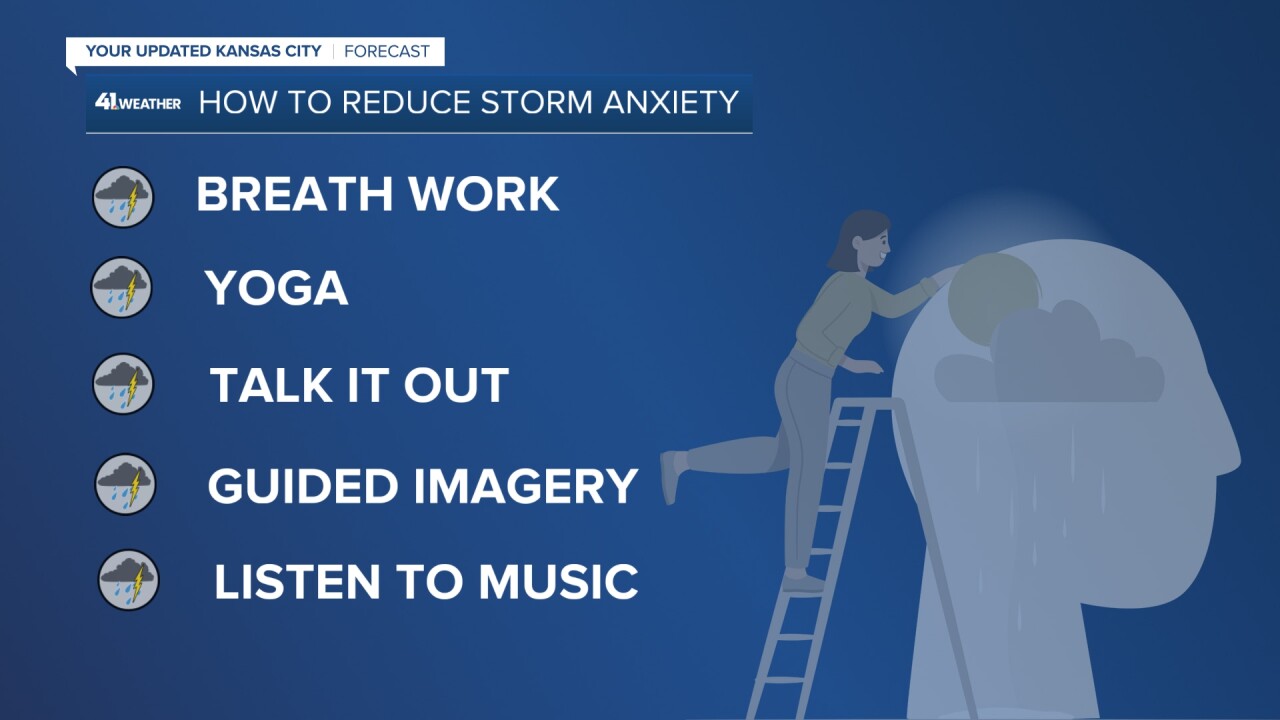
Editor's Note: This story is part of a series of stories, "Are You OK?" from KSHB 41 News and the KSHB 41 Community Advisory Board during Mental Health Awareness Month. Additional mental health resources are available in Kansas and Missouri. Help is always available by dialing 988.
—
Texas, Missouri and Kansas currently top severe weather charts for the combination of hail, wind and tornado reports this year.
- Texas: 1,198 total reports
- Missouri: 866 total reports
- Kansas: 631total reports
It seems like Tornado Alley is making a comeback. Midwest states that are part of Tornado Alley account for 76% of all the tornado reports so far this season.
The top five states with the most tornadoes include Iowa, Texas, Kansas, Ohio and Missouri.

In years past, early-season tornado activity usually stuck to what we call Dixie Alley, or closer to the Gulf of Mexico.
But not this year.
In fact, if we look at the trend across Kansas and Missouri alone, you'll see our confirmed tornadoes in April were three times the normal amount.
So far, May is on pace to be above normal as well.

Dr. Emily Bethea-Johnson operates a private practice but is also a professor at MidAmerica Nazarene University.
Storm anxiety is something she not only works with clients on but is a familiar feeling after growing up in Oklahoma. She said dealing with repetitive storms can create trauma.
“We must pay attention to mental health related to storms and weather. It’s vital for us," Bethea-Johnson said. "It’s something where I think repeated exposure over time … can create symptoms of PTSD."
Megan Moore developed storm anxiety after she moved to the Liberty area for college. She recalled having to shelter in her dorm at William Jewell.
Now that she has experienced multiple severe weather seasons, I asked her if her storm anxiety has improved. Her response was not what I was expecting.
“It’s actually probably become worse … since I’ve lived alone," Moore said. "I’m always thinking one step ahead about how I can keep myself, and my cat, she’s my baby, I’m trying to keep us both safe."
Bethea-Johnson said coping skills can help work through storm anxiety as they help regulate our bodies.
The doctor explained it's all about building up your mind-body connection. If you can help take focus away from the portion of your brain where the anxiety center lives, you can help ground yourself back into the present moment.

People of all ages can experience storm anxiety as the trauma can be stored in your body over time.
Some tips to help with easing storm anxiety with children include:
- Making a play kit for your safe place;
- Play games or give kids a calming task to work on;
- Deep breathing as a family;
- Have kids write down or draw their feelings to help them learn emotional processing;
- Listen and take their concerns seriously;
- Watch how you react.
Bethea-Johnson acknowledged the last tip is difficult as getting your own emotions regulated as a parent can be hard during times of stress.
However, she explained it is vital as our kids feed off our emotions and learn how to process stress and trauma from us.
If you have a kid experiencing stress or anxiety, Bethea-Johnson also runs the play therapy center at MNU and has more resources for kids and families
Overall, both Bethea-Johnson and Moore agree that when it comes to storm anxiety, knowledge is power.
By learning about storms, how often they happen, doing research and exploring coping skills, you can help ease anxiety.
"Stay prepared, come up with your kit beforehand, just educate yourself," Moore said. "And know there are other people in the community that are in the same boat.”
—




